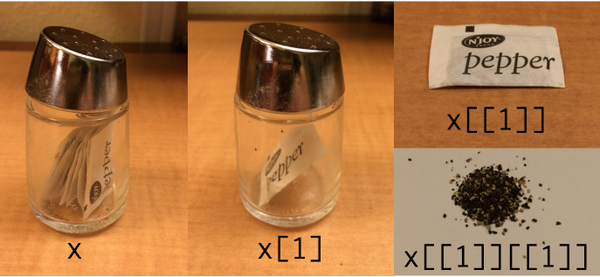using lists in R
One of my goals while on long service leave is to learn some new R things that have been on my radar for a while… the first of these is purrr. The purrr package allows you to iterate a function across different elements in a list or dataframe.
I have started to try and learn purr before (see a list of resources here). I have copied other people’s purrr code a couple of times too…
- how to use map to read in a LOT of .csv files and
- using pwalk to output plots in different colour schemes
… but when you copy purrr code from someone else and adjust it to suit you own problem… you can’t really say you know how to use purrr.
The first thing I think I need to get my head around in order to understand purrr is lists. Dataframes are the bread and butter of the tidyverse and up until now I have avoided them, or tried desperately to use as.dataframe() or unnest() to turn them into a data structure that i understand. Lists allow you to bundle together different kinds of data elements together, so now is the time to get my head around them.
how to make a list
This is a example I copied from a tutorial
myfirstlist <- list(2,
"hello",
c(3,5,4),
1:5,
list(FALSE,
c("this", "is","a","list"),
c(FALSE,TRUE,TRUE,TRUE,FALSE))) The list() function lets you put elements of all different types (and lengths) into a listy bundle; characters and numbers and logicals. One of the elements in this list of 5 items when others have 3 items or even 1. Another item is ANOTHER list made up of 3 items. Lists within lists— eeeekk. We can use the class() function to check that our list is a list and the str() function to get our head around what we are dealing with.
class(myfirstlist)## [1] "list"str(myfirstlist)## List of 5
## $ : num 2
## $ : chr "hello"
## $ : num [1:3] 3 5 4
## $ : int [1:5] 1 2 3 4 5
## $ :List of 3
## ..$ : logi FALSE
## ..$ : chr [1:4] "this" "is" "a" "list"
## ..$ : logi [1:5] FALSE TRUE TRUE TRUE FALSEThis iconic image (which I think comes from a Jenny Bryan talk) is supposed to help me understand how to access elements of a list.
Lets see if I can unpack it.
 TBC…
TBC…